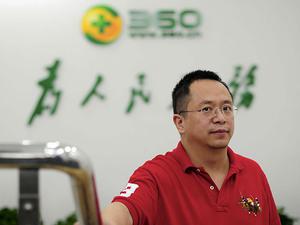南开百年辉煌 启航金融新百年

南开百年校庆纪念系列活动
南开“灾害风险与保险”学术大讲堂
(2019年第四期)
Systemic Risk & Resilience of MegaCities
– Exposure Dynamics
特邀专家
Academician Tso-Chien PAN
Executive Director of Institute of
Catastrophe Risk Management,
Nanyang Technological University, Singapore

新加坡工程院院士,东盟工程院院士
新加坡南洋理工大学
巨灾风险管理研究院创始院长
南洋理工大学工学院前院长、
土木及环境工程学院前院长
英国剑桥大学商学院风险管理研究所顾问
瑞士苏黎世理工大学风险管理研究所顾问
国际地震工程学会前执行委员
世界地震安全委员会前秘书长
时间:2019年12月12日(周四)下午2:00
地点:金融学院336多功能报告厅
主办
南开大学灾害风险管理与巨灾保险研究中心
南开大学金融学院
特邀专家简介
Professor Tso-Chien PAN received his PhD and MS degrees (Structural Engineering and Structural Mechanics) from the University of California at Berkeley in USA, and his BS degree from the National Cheng Kung University in Taiwan. He joined the faculty of Nanyang Technological University (NTU) in Singapore in 1985. Prof Pan has served as NTU’s Dean of the College of Engineering (CoE), after serving as Dean/Chair of the School of Civil & Environmental Engineering. He has provided the critical leadership in the transformation of NTU’s CoE, which consists of 6 engineering schools, towards a world-class college.
Professor Pan specializes in the analysis and design of structures against dynamic loading. Over the years, he has carried out many research projects in the area of dynamic structural response to shock, blast and earthquake loading. Prof Pan has made useful contributions to both the national and international research communities as well as engineering societies. He is the Founding President of Earthquake Society (Singapore). Having served as a Director of Executive Committee of the International Association for Earthquake Engineering (IAEE), Prof Pan is serving the earthquake engineering profession as Secretary General of the World Seismic Safety Initiative, IAEE.
Professor Pan has served as an Associate Editor of the Journal of Structural Engineering, American Society of Civil Engineers, and is on the editorial board of the Journal of Smart Structures and Systems.
Since 2011, Prof Pan has been the Founding Executive Director of the Institute of Catastrophe Risk Management (ICRM) at NTU Singapore, the first multi-disciplinary risk management research institute of its kind in Asia and amongst a handful of such centers in the world. He is the principle investigator of a Singapore’s national program for the ASEAN region on “Natural Catastrophe Data Analytics Exchange (NatCatDAX)”. Prof Pan has been appointed to lead from 2020 an ASEAN-wide program on “ASEAN Disaster Risk Financing and Insurance – Phase 2 (ADRFI-2)”.
He is now serving as an advisor to the Cambridge Centre for Risk Studies, Judge Business School, the University of Cambridge, UK, as well as an advisor to the ETH Risk Centre, Swiss Federal Institute of Technology (ETH), Zurich. He is a Fellow of the Academy of Engineering Singapore, the IES (Institution of Engineers Singapore) Academy, and the ASEAN Academy of Engineering & Technology.
报告简介
ABSTRACT
Rapid urbanization and wealth growth are the key drivers of Asia’s future risks in the rapidly growing region of East Asia and Southeast Asia. With urban population increasing dramatically worldwide, cities are playing an increasingly critical role in human societies and their sustainability.
The world has already crossed a major landmark in its history with the majority of people now living in cities. This has happened to China as well based on its latest censor results. Thus, a major challenge worldwide, and particularly so for Asia and Southeast Asia, is to understand and predict how the dynamics resulting from wealth and population growth as well as rapid urbanization will impact the interactions between nature and human society. During the past five decades, the largest human and economic losses due to catastrophic events have occurred in Asia. In year 2011 alone, the world saw its highest natural catastrophe loss of US$380 billions due mainly to Asia and Southeast Asia disasters – the devastating Thailand flood and the massive Japan earthquake followed by tsunami and nuclear reactors meltdown.
Recently, the population data of major urban conglomerates show that Asia has 11 out of the top 15 urban conglomerates of the world, with population more than 26 million. Population growth and rapid urbanization of Asia and Southeast Asia thus present special challenges to catastrophe risk management. The urban-based risks can possibly involve the risk domains of natural catastrophes and manmade disasters, which may cover wind/flood effects, earthquake shakings, infrastructure security, terrorism, pandemic, for example. In this age, where cities endeavour to be “smart”, energy, transport, water, finance, and other systems are interconnected by computers and networks. It is thus essential to study and make these cyber-physical systems of megacities more resilient for reliable delivery of critical services.
The interaction of complex adaptive dynamic behavior of societal response to catastrophes with cascading failure of interdependent networks of infrastructural systems is a massive challenge in dealing with the domain of evolving new urban-based systemic risks of megacities in Asia.
欢迎师生及各界人士参加!
热门推荐
收起
24小时滚动播报最新的财经资讯和视频,更多粉丝福利扫描二维码关注(sinafinance)








